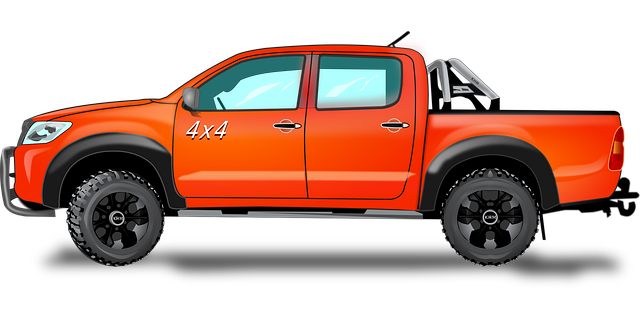Receiver hitches, essential for secure trailer towing, are offered by RGV Wheels and Tires in diverse options tailored to various vehicles and needs. Key types include gooseneck (heavy-duty) and class III (everyday use). Installation requires secure mounting to the vehicle frame and accurate positioning. Regular maintenance, focusing on wheel and tire care, is crucial for hitch longevity. Proper inflation, rotation, and inspection prevent damage and ensure stable towing, enhancing RV adventures with RGV wheels and tires.
“Unleash the full potential of your vehicle with a receiver hitch—a versatile attachment that opens up a world of possibilities. This comprehensive guide, ‘Understanding Receiver Hitches,’ delves into the intricacies of this essential automotive component. We explore how RGV (Receiver Hitch System) wheels and tires play a pivotal role in enhancing hitch functionality, ensuring smooth towing and secure cargo transport. From types of receiver hitches to installation tips and maintenance tricks, this article is your ultimate companion for all things related to receiver hitches and rgv wheels and tires.”
- Understanding Receiver Hitches: A Comprehensive Overview
- The Role of RGV Wheels and Tires in Hitch Functionality
- Types of Receiver Hitches: An In-depth Analysis
- Installation and Safety Guidelines for Optimal Performance
- Maintenance and Troubleshooting Tips for Longevity
Understanding Receiver Hitches: A Comprehensive Overview

Receiver hitches are a crucial component in towing and hauling systems, especially for those who rely on their vehicles for work or leisure activities. These hitches serve as the connection point between your vehicle and the trailer or load you wish to tow, ensuring a secure and stable attachment. Understanding how receiver hitches function is essential when considering an upgrade or replacement, particularly when exploring options from renowned brands like RGV Wheels and Tires.
At their core, receiver hitches consist of a metal frame that is welded or integrated into the bed of your pickup truck or SUV. This frame features a receptacle, or “receiver,” which accommodates a hitch ball attached to your trailer. The secure locking mechanism ensures the trailer stays firmly in place during transport, even on uneven terrain. RGV Wheels and Tires offers a range of receiver hitches designed for various vehicle types and towing needs, catering to both everyday haulers and off-road enthusiasts.
The Role of RGV Wheels and Tires in Hitch Functionality

Receiver hitches are a crucial addition to any vehicle, providing a secure attachment point for hauling trailers and equipment. Among the key components that ensure hitch functionality are RGV (Receiver Guard/Wheel) wheels and tires. These specialized wheels play a pivotal role in stable and safe towing.
RGV wheels are designed to withstand the rigors of frequent coupling and uncoupling, ensuring a solid connection between the receiver and the trailer hitch. Their robust construction and durable materials prevent damage during loading and unloading processes, which can be common in various work and recreational settings. Moreover, RGV tires offer superior traction and stability on diverse terrains, allowing for controlled towing even in challenging conditions. This functionality is particularly beneficial when hauling heavy loads or navigating through rough terrain, ensuring both safety and efficiency during transportation.
Types of Receiver Hitches: An In-depth Analysis

Receiver hitches are a versatile and essential attachment system for towing and hauling, offering a wide array of options to suit various needs. When it comes to types, there are two primary categories: gooseneck and class III hitches. Gooseneck hitches, characterized by their curved shape, provide superior stability and capacity, making them ideal for heavy-duty tasks and large trailers. These hitches allow for a smooth connection between the vehicle and trailer, ensuring a secure towing experience.
Class III hitches, on the other hand, are a popular choice for everyday towing needs. They are designed to mount in the receiver box of a pickup truck or SUV and offer a range of ball mounting options from RGV wheels and tires, catering to different trailer types and sizes. This versatility makes class III hitches a practical and affordable solution for those who require regular towing capabilities without the heavy-duty features of gooseneck hitches.
Installation and Safety Guidelines for Optimal Performance

When installing receiver hitches, whether for your RV wheels and tires or any other vehicle, it’s crucial to follow safety guidelines for optimal performance. Begin by ensuring the hitch is securely mounted to your vehicle’s frame using all provided hardware. Double-check that the mounting bolts are tightly fastened, as loose connections can lead to unsafe conditions during towings. Position the hitch at the designated receiver location, aligning it accurately with the ball mount on your trailer or RV wheels and tires. Use a level to ensure the hitch is straight and secure before securing it in place.
Regularly inspect your receiver hitch for any signs of wear or damage, especially after frequent use. Ensure all safety pins, locks, and latches are in good working condition. Maintain proper tire pressure and rotate your RV wheels and tires according to the vehicle’s recommendation to distribute weight evenly and enhance towing stability. Remember, a well-maintained hitch system, combined with responsible driving practices, will ensure safer and more enjoyable journeys for your RV adventures using RGV wheels and tires.
Maintenance and Troubleshooting Tips for Longevity

Regular maintenance is key to ensuring your receiver hitches last for years to come. One essential aspect is keeping an eye on your RGV wheels and tires. Inspect them frequently for any signs of wear, damage, or misalignment. Well-maintained wheels and tires ensure a smooth towing experience and distribute weight evenly, reducing the strain on your hitch system. Remember to rotate your tires periodically as per the vehicle manufacturer’s recommendations to promote even tire degradation.
Troubleshooting common issues can also contribute to longevity. If you notice unusual noises while towing, such as clanking or rattling, stop and check for loose connections or secure any sway bars if equipped. Regularly review hitch stability and ensure all components are properly tightened. In the event of a malfunction, don’t ignore it. Addressing problems early can prevent more severe issues down the line. Consider consulting your vehicle’s owner manual for specific maintenance routines tailored to your receiver hitch model.
Receiver hitches are a versatile and essential addition to any vehicle, enhancing towing capabilities and offering numerous benefits. By understanding the different types, proper installation techniques, and regular maintenance, users can maximize the efficiency of their receiver hitches. The article has explored these aspects, highlighting the crucial role of RGV wheels and tires in ensuring seamless hitch functionality. With this knowledge, drivers can confidently navigate various towing needs, from everyday hauling to adventurous off-road trips, while prioritizing safety and vehicle longevity.
